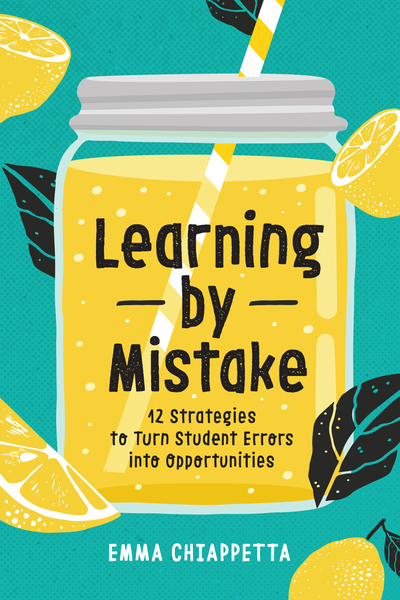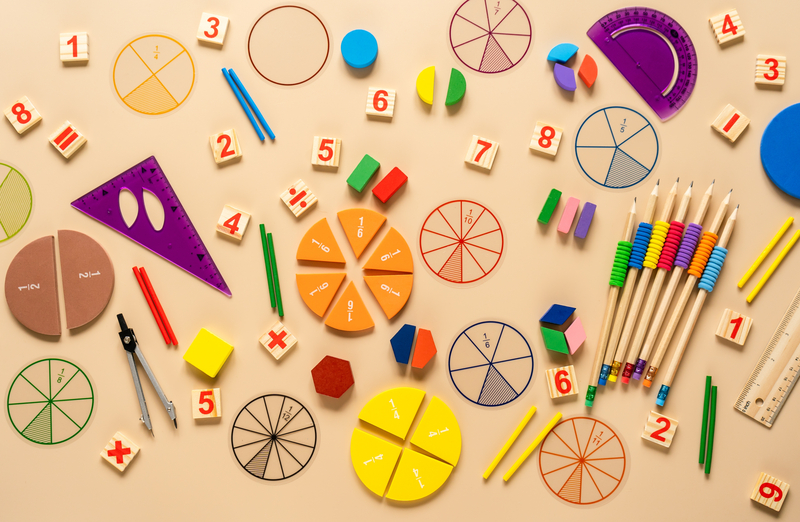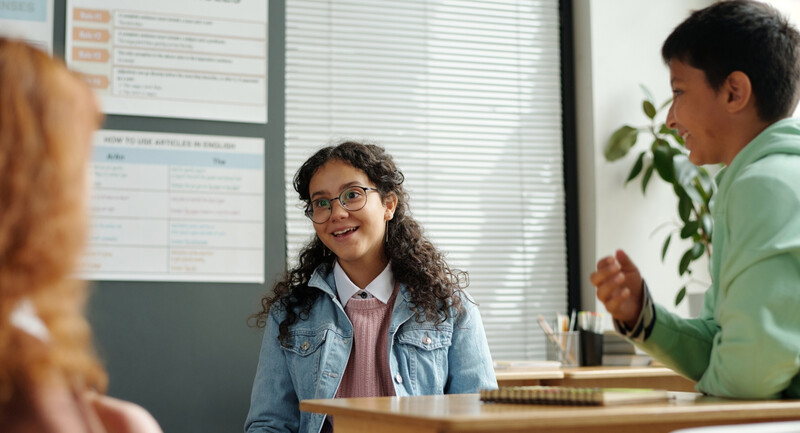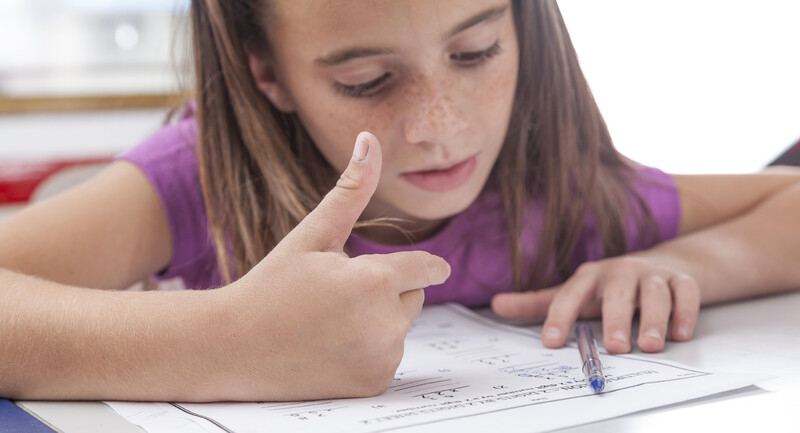What if mistakes weren’t something to avoid but something to embrace? In Learning by Mistake: 12 Strategies to Turn Student Errors into Opportunities (ASCD, 2025), educator Emma Chiappetta challenges students’ deeply ingrained fears of being wrong and shows how educators can transform these anxieties into a powerful driver for learning. Drawing on over 12 years of classroom experience, Chiappetta uses each chapter of her book to zero in on practical strategies for building a “positive mistake culture” where errors aren’t seen as failures but rather as steps toward creativity, insight, and confidence. In this excerpt, Chiappetta walks educators through an engaging and thought-provoking exercise to setting a welcoming tone around mistake-making from the very start of the school year. By creating playful, low-stakes opportunities to be wrong on purpose, teachers can gently reshape students’ mindsets, laying the foundation for the type of classroom culture where students feel safe to try, fail, and try again.
Addressing the Fear of Making Mistakes
Take a moment to reflect on the tone you want to set around mistakes in your classroom. How do you want your students to respond to their own mistakes? To their classmates’ mistakes? How do you want to respond to students’ mistakes? How do you want students to feel while and after making a mistake? The beginning of the school year is an ideal time to set the tone you desire.
In a classroom with a healthy mistake culture, students take risks without fear of being wrong. Mistakes are treated as part of the learning process rather than as roadblocks or indicators of low intelligence. When students make mistakes, they don’t feel embarrassed, shameful, or dejected. Instead, they are determined to figure out the truth and confident in their ability to do so. They know that if they can’t get there on their own, their classmates and teacher will be there to support them.
Regardless of the grade level you teach, your students enter your class with a backpack full of previous mistake experiences. An important step in creating a healthy culture around mistake-making is understanding that baggage. In addition to giving a diagnostic test at the start of the year to discern your students’ prior knowledge, I suggest using the following strategy to help determine the levels of mistake anxiety that your students carry.
“Wrong Answers Only”
Giving students the opportunity right off the bat to be wrong without suffering consequences will help you set a “Yes, and” tone. Such a tone will encourage students’ creativity and desire to overcome their fear of mistakes. Ease them into this opportunity. Because students tend to carry mistake anxiety and perceive being wrong as shameful, you want to avoid putting them in a situation where they feel they are being forced into this uncomfortable state.
Consider the following example. You introduce a pop quiz on the previous year’s content with something like “Don’t worry—mistakes are welcome here! I don’t expect your answers to be correct, and this quiz is not graded.” Then you ask a question and randomly call on each student to answer. Do you think your brief words will be enough to reduce their mistake anxiety? Doubtful. Students will probably feel pressured to perform or get overwhelmed and respond, “I don’t know.” Your comments may ease their fears about grades, but they will still feel anxious about how their peers perceive them, especially if this is a new class with new classmates. Building culture takes time, and a few words at the start of the year will not be enough to undo years of shame that have built up around mistakes.
In a classroom with a healthy mistake culture, students take risks without fear of being wrong.
Instead, implement the “Wrong Answers Only” activity to get your students making mistakes in the first week without fear. In this low-stakes game, based on a popular internet meme, students share silly, purposely wrong answers to a prompt—for example, “List three things you keep in your refrigerator.” Brainstorming wrong answers lays the groundwork for building comfort with mistakes. Afterward, students can have conversations about why each silly answer was wrong. These discussions get students into the habit of analyzing mistakes and reflecting on where misconceptions come from.
This game addresses the four levers of mistake response in the following ways:
The activity refrains from punishing mistakes. In fact, it does quite the opposite by encouraging students to make mistakes on purpose. The activity plays the role of an ungraded icebreaker that is purely for fun.
The teacher’s response to wrong answers throughout this game should be curiosity. They should encourage silly and creative responses and ask students how they came up with their ideas. Doing so demonstrates that the teacher is more interested in students’ thought processes than in their final answer.
The game promotes the development of a safe environment for making mistakes.
Students are encouraged to express curiosity about their peers’ responses. The teacher should set a firm expectation that no response is to be ridiculed. Instead, the intention is to learn about how each group member came up with their idea.
If you are introducing this activity as an icebreaker early in the year, make sure that the prompts are not related to academic content to prevent students from feeling like they are being tested in front of their peers. Their fears about appearing “dumb” will arise even if there is no grade attached to the activity. I like to use silly prompts like these:
In terms of format, you’ve got a few different options here. I prefer the energy and camaraderie that occur as students share their answers out loud, so I randomly assign students to small groups. Since students may not be comfortable having their name attached to their mistakes this early in the year, you may prefer answers to remain anonymous. This can be accomplished with a tool such as Poll Everywhere, which lets students submit responses via computer or text message and generates a word cloud. Then you can analyze the “wrongness” of each answer as a class and vote on which is “most wrong.”
Before engaging in this activity, dedicate time for a conversation with your class about group work, norms, class routines, and respect. This lays the groundwork for a fun and harmless day in class. Then follow these steps:
Assign each small group to a whiteboard.
Present the prompt.
Give students three minutes to come up with as many wrong answers as they can. Have a scribe for the group write the answers on the whiteboard. (During each round of the game, a different student in each group plays the role of scribe.)
When the three minutes are up, each group spends an additional three minutes discussing all the answers and coming up with their favorite.
Each group shares its favorite answer with the whole class.
Repeat the process with a new prompt.
Example
These are all responses I received to the prompt “Things you might find in a freezer.” Of course, students had been asked to provide wrong answers only.
The room filled with giggles, and the responses became sillier and sillier. Students tossed them out at a rapid-fire pace, building on one another’s energy. Kids who were normally quiet began to chime in, often more than once. By the time the game ended, students were nearly out of breath from laughing. I was excited for the year and hoped that we could build off this energy and comfort with one another to be creative, take risks, and confidently share “wrong” responses.
Following the game, have students individually fill out an anonymous survey about their attitudes toward making mistakes both in and out of school (see Figure 2.1). Data from the survey provide the teacher with diagnostic information about students’ existing perceptions of mistakes as a starting point for the year.
Figure 2.1: Sample Mistake Attitudes Survey
1. What is a mistake you made recently, either in or out of school?
2. How did it feel to make that mistake?
3. Did you learn anything from it?
4. How do you typically feel when you make a mistake in school?
5. How do you typically feel when you make a mistake outside school?
6. How do you react when you make a mistake?
7. Do you believe it’s possible to learn from mistakes?
Learning by Mistake
Drawing on neuroscience research and classroom experience, Chiappetta provides 12 practical, field-tested strategies that help build a positive mistake culture.









